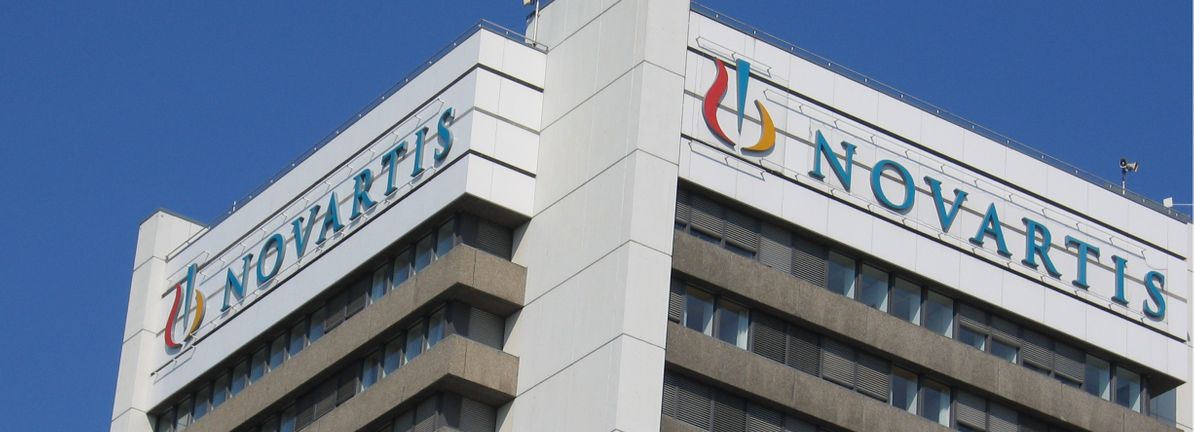Introduction
Chronic obstructive pulmonary disease (COPD) ranks as the third leading cause of death globally, accounting for 3.23 million fatalities in 2019, surpassed only by ischemic heart disease and stroke.1 Projections from the Global…

Chronic obstructive pulmonary disease (COPD) ranks as the third leading cause of death globally, accounting for 3.23 million fatalities in 2019, surpassed only by ischemic heart disease and stroke.1 Projections from the Global…

Deep Robotics, a Hangzhou-based start-up, is facing a severe talent shortage, hindering its efforts to commercialise the results of its research and development, according to its chief technology officer (CTO).
Li Chao, who is also a co-founder of the robot maker, said at the Bund Summit Financial Forum in Shanghai on Friday that highly skilled professionals were very much needed to help Deep Robotics take its business forward.
He added that top talent in the algorithm area was in strong demand, which the company needed to fine-tune its humanoid robots to better serve clients.
Do you have questions about the biggest topics and trends from around the world? Get the answers with SCMP Knowledge, our new platform of curated content with explainers, FAQs, analyses and infographics brought to you by our award-winning team.
“Robots are [penetrating] every manufacturing sector,” Li said. “As a company, we must seize the opportunity to make our products not only usable but also reliable in some industrial scenarios.”
Deep Robotics has launched the DR02 industrial-grade robot capable of operating reliably under all weather conditions. Photo: Handout alt=Deep Robotics has launched the DR02 industrial-grade robot capable of operating reliably under all weather conditions. Photo: Handout>
Deep Robotics was founded by CEO Zhu Qiuguo in 2017, when he was an associate professor at Zhejiang University.
The company is part of an unofficial group of start-ups dubbed the “Six Little Dragons of Hangzhou”, alongside artificial intelligence developer DeepSeek, video game studio Game Science, brain-machine interface innovator BrainCo, 3D interior design software developer Manycore and robot maker Unitree Robotics.
The six firms are widely seen as future stars, boosting Beijing’s ambitions of building China into a global technology powerhouse.
DeepSeek’s breakthroughs in large-language models sparked a trillion-dollar global rout in Nvidia and US tech stocks in January. The firm’s two powerful AI models were built at a fraction of the cost and computing power used by foreign firms. But their performance proved to be on par with OpenAI’s GPT model.
“The ‘Little Dragons’ are the envy of the country’s tech industries and, technically, they can attract all kinds of talent because of their reputation,” said Ding Haifeng, a consultant at financial advisory firm Integrity in Shanghai. “Top start-ups are eager to accelerate the transition of their research into commercial applications. Consequently, they are actively chasing more qualified professionals to strengthen their overall capabilities.”

The coronavirus disease 2019 (COVID-19) was declared by the World Health Organization (WHO) as a pandemic on March 11, 2020. It poses a serious threat to human health and remains a major public health challenge worldwide.1 COVID-19…

More like this:
• Why the year’s most acclaimed film flopped
• 12 of the best films to watch this October
• Why Lady Macbeth is a misunderstood villain
When Hedda landed on the London stage, also in 1891, that first UK production played a large…

Paleontologists in Argentina have discovered a perfectly preserved, 70-million-year-old carnivorous dinosaur egg, sparking hopes it may contain an embryo.
ERBIL (Kurdistan24) – A team of scientists in Argentina has unearthed…

The so-called London Underground mosquito was long thought to be an example of modern or observable evolution [Getty]
A mosquito long thought to have evolved in the tunnels of the London Underground actually originated more than a thousand…

Sedana Medical (OM:SEDANA) remains unprofitable, posting losses that have increased at 1% per year over the past five years. Looking ahead, the company is forecast to stay in the red for at least the next three years. Revenue is projected to grow by 26.45% per year, outpacing the broader Swedish market’s 3.9% expected annual growth. Investors are weighing this robust revenue outlook against the risk backdrop of continued losses and an uncertain path to profitability.
See our full analysis for Sedana Medical.
With the numbers in, the next section will compare Sedana Medical’s latest results to the key narratives shaping market sentiment. We will see where the data strengthens consensus and where it forces a rethink.
See what the community is saying about Sedana Medical
Sedana Medical’s future gross margin outlook benefits from operational improvements. Supply chain integration and steady gross margins already above 70% strengthen the case for margin progression as the business scales.
Analysts’ consensus view notes that sustainable margin expansion is tied to successfully entering the U.S. market. Positive pivotal trial data and FDA Fast Track Designation could open a market three times larger than its current core:
The company’s addressable patient pool grows if regulatory milestones are hit in the U.S. and pediatric indications expand within Europe.
Consensus sees market penetration and improved margins as achievable, but only if execution matches the ambitious entry and adoption plan for new geographies.
What is surprising is that despite the lack of accelerating profit growth so far, the clinical advantages and hospital investment trends identified in the consensus narrative are expected to maintain or lift margins further.
Sedana trades at a Price-to-Sales ratio of 5.4x, above its peer average of 2.9x but nearly identical to the Swedish Medical Equipment industry average of 5.5x. This shows that while it looks relatively expensive versus direct peers, its valuation closely mirrors the wider sector.
According to analysts’ consensus, this valuation profile places Sedana in line with industry momentum. Continued strong revenue growth could justify the premium if margin trends hold:
Analysts expect 23.3% annual revenue growth over the next three years, far surpassing the Swedish market’s 3.9% rate.
Even so, consensus argues that reaching fair value depends on both revenue delivery and eventual profitability, metrics not yet achieved as the company plans for U.S. launch and ongoing expansion.
The consensus outlook suggests that Sedana’s share price of 10.6 sits well below the analyst price target of 21.0. This reinforces how valuation tension is influenced by forward growth assumptions and execution risk.

TL;DR: Scan, OCR, edit, sign, and share from your phone forever with a lifetime subscription to iScanner for $24.99 with promo code SCAN through Nov. 2.
If your “scanner” is a dimly lit photo…

Novartis (SWX:NOVN) shares have shown steady upward momentum over the past month, gaining 6%, and climbing 12% across the past 3 months. Investors seem to be weighing the company’s annual revenue and earnings growth in their outlook.
See our latest analysis for Novartis.
Momentum has been building for Novartis, with the share price return up 16.9% year-to-date and a total return of 9.3% over the past year. This reflects renewed optimism around the company’s growth prospects as well as its consistent long-term shareholder performance.
Curious about what other pharma leaders are doing? Discover more in our comprehensive pharmaceutical stocks screener: See the full list for free.
With a recent run-up in the share price along with sustained growth in revenue and earnings, the key question for investors now is whether Novartis remains undervalued or if the market has already priced in its future growth potential.
Novartis’ most-followed valuation narrative places fair value at CHF98.60, which is about 5.6% below the recent close of CHF104.08. This suggests the stock may be trading above what is justified by expected growth and profits.
Operational efficiency gains from portfolio streamlining (for example, previous spin-offs and exiting non-core lines) and productivity improvements are driving core margin expansion and higher free cash flow. These gains can be reinvested in research and development and shareholder returns, supporting long-term earnings and net margin growth.
Read the complete narrative.
Curious what specific profit targets—and bold margin moves—are backing this valuation call? The most popular narrative is betting on strong improvements ahead, setting a stage for figures that might surprise even seasoned investors. Click through and see what’s driving analysts’ fair value math.
Result: Fair Value of $98.60 (OVERVALUED)
Have a read of the narrative in full and understand what’s behind the forecasts.
However, pivotal risks remain. These include the threat of generic competition for key drugs and mounting global pricing pressures, both of which could quickly dampen growth expectations.
Find out about the key risks to this Novartis narrative.
Looking at Novartis through the lens of its price-to-earnings ratio, the story shifts. The company trades at 18.6x, lower than the European industry average of 22.9x and well below peers at 74.7x, and even beneath the fair ratio of 29.3x. This sizable gap hints at a possible value opportunity. Is the market missing something, or is caution warranted?